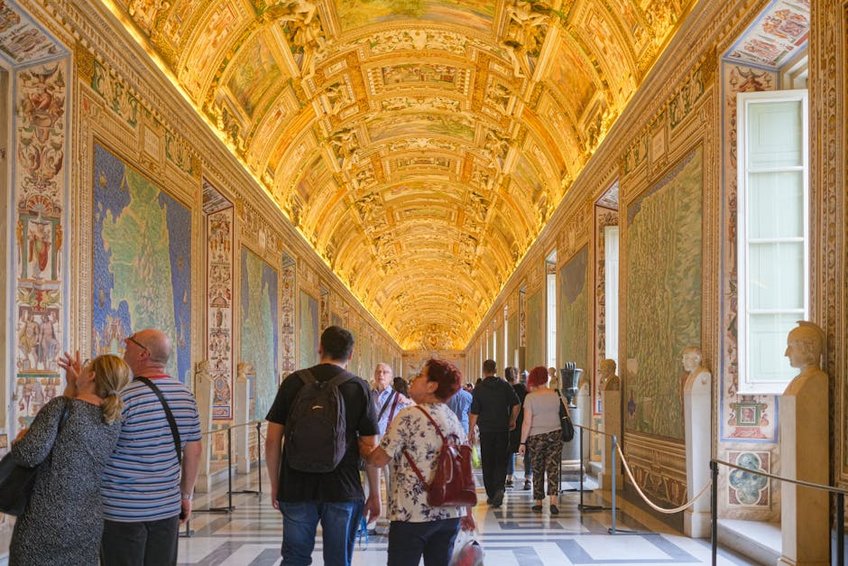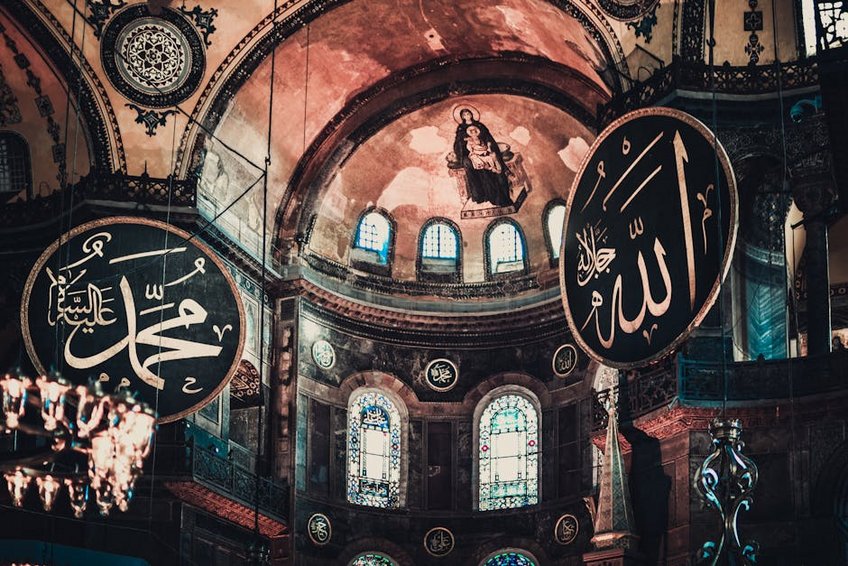Hatay Antakya Mosaic Museum: Exploring Ancient Roman Masterpieces
The Hatay Antakya Mosaic Museum houses one of the world’s largest and most significant collections of Roman mosaics, showcasing intricate artworks from ancient Antioch that date back to the 2nd and 3rd centuries. These breathtaking floor mosaics feature mythological scenes, geometric patterns, and daily life depictions preserved through meticulous archaeological work spanning decades. This guide covers practical visiting tips, historical context, and insider advice for maximizing your cultural experience in southern Turkey.
Essential Museum Information
The museum opened in 2014 following extensive renovations to properly display mosaics discovered during archaeological excavations in the Antakya region. Its modern facilities span 32,000 square feet with climate-controlled galleries protecting these delicate ancient artworks from environmental damage. The collection primarily originates from wealthy Roman villas in ancient Antioch, once the third-largest city in the Roman Empire.
Visitors encounter stunning examples of Roman mosaic art including the famous Megalopsychia Hunt mosaic measuring 23 feet long. Other highlights include the Orpheus mosaic depicting mythological scenes and the Yakto Complex mosaic showing detailed hunting scenes. These artworks provide invaluable insights into Roman domestic life, artistic techniques, and cultural influences in the Eastern Mediterranean.
Historical Significance and Background
The mosaics survived multiple earthquakes and urban development thanks to their burial under layers of sediment. Archaeological teams from Princeton University and local institutions conducted major excavations throughout the 20th century. Their work revealed how Antioch served as a crucial cultural crossroads between Roman, Greek, and Eastern traditions.
Collection Highlights and Masterpieces
The museum’s centerpiece remains the complete floor mosaics transported from their original locations. These include the 4th-century Dionysus mosaic showing the god of wine surrounded by grapevines and mythological figures. Another remarkable piece features personifications of the four seasons with exquisite color gradations achieved through natural stone tesserae.
- The Megalopsychia Hunt mosaic displays sophisticated narrative storytelling through its depiction of a hunting expedition with detailed animal figures and landscape elements.
- Geometric border patterns demonstrate advanced mathematical understanding with precise symmetry and optical illusion effects that still impress modern visitors.
- Domestic scene mosaics reveal daily Roman life through images of food preparation, musical performances, and social gatherings in wealthy households.
- Budget travelers spend $15-25 daily covering museum admission ($5), local transportation ($3), street food meals ($7), and hostel accommodation ($10) within walking distance of the museum.
- Mid-range visitors allocate $40-60 daily including museum tickets ($5), taxi transportation ($10), restaurant meals ($15), and comfortable hotel rooms ($30) with breakfast included.
- Luxury experiences cost $80-120 daily featuring private guided tours ($25), premium accommodation ($50), fine dining ($25), and private driver services ($20) for seamless transportation.
- Turkish Ministry of Culture and Tourism
- Lonely Planet Turkey Travel Guide
Museum Layout and Visitor Experience
The building features a chronological pathway through the galleries beginning with early Roman period works. Interactive displays explain mosaic conservation techniques while multilingual audio guides provide context for non-Turkish speakers. The museum’s design incorporates natural lighting to enhance color visibility without damaging the ancient pigments.
Accessibility features include wheelchair ramps, elevators between floors, and tactile models for visually impaired visitors. Guided tours typically last 90 minutes covering the main highlights while self-guided visits allow more flexibility for photography and detailed observation. The museum shop offers quality reproduction prints and educational materials.

Alt: “hatay-antakya-mosaic-museum-roman-floor-art”
Hatay Antakya Mosaic Museum – Planning Your Visit
Your Hatay Antakya Mosaic Museum experience benefits from advance planning considering seasonal crowds and local climate conditions. The museum receives highest visitation between March and June when Mediterranean weather provides ideal conditions for combining indoor museum time with outdoor archaeological sites. Summer months bring intense heat reaching 95°F (35°C) making air-conditioned galleries particularly appealing.
Budget approximately $25-40 per person for basic admission, transportation, and simple meals near the museum. The Turkish Ministry of Culture manages ticket pricing with discounts available for students and seniors with proper identification. Combine your visit with other Hatay attractions like St. Pierre Church and the ancient city walls to maximize your day.
Purchase tickets online through the official museum website to avoid queues, especially during Turkish national holidays and weekends. The museum’s proximity to the Syrian border means checking current travel advisories remains essential for international visitors. Most Western passport holders can enter Turkey visa-free for up to 90 days.
Best Time to Visit the Museum
Visit between September and November for pleasant temperatures ranging 65-80°F (18-27°C) and smaller crowds after summer vacation periods. Spring months from March to May offer similar conditions with blooming landscapes around the museum complex. July and August see temperatures soar above 90°F (32°C) though the museum’s climate control maintains comfortable indoor conditions.
Weekday mornings between 9-11 AM typically feature lightest visitation while weekends attract local families and tour groups. The museum extends hours until 7 PM during peak season from April through October. Check for special exhibitions that might affect crowd patterns and consider visiting during lunch hours when many visitors break for meals.
Budget Planning and Costs
Museum visiting costs vary based on accommodation choices and additional activities in the Hatay region.
Essential Preparation Checklist
Pack comfortable walking shoes as the museum requires substantial standing and moving between galleries. Bring a light jacket since air conditioning maintains cooler temperatures around 68°F (20°C) for artifact preservation. Photography equipment needs include cameras without flash and tripods requiring special permission from museum staff.
Essential documents include your passport for identification, international health insurance cards, and credit cards accepted at the museum shop. Download offline maps of Antakya since cellular service can be unreliable in the museum’s stone construction. Learn basic Turkish phrases for greetings and directions to enhance interactions with local staff.
Top Attractions and Museum Experiences
The mosaic collection spans multiple galleries organized thematically and chronologically from the 1st to 6th centuries AD. Visitors should allocate minimum two hours to appreciate the scale and detail of these archaeological treasures. The museum’s architectural design itself merits attention with its innovative display methods and preservation technology.
Beyond the famous mosaics, the museum features a conservation laboratory visible through glass walls where visitors can observe experts restoring fragile artifacts. Temporary exhibitions rotate quarterly focusing on specific aspects of Roman art, archaeology techniques, or regional history. These special displays often include artifacts on loan from other Turkish museums and international collections.
Must-See Mosaic Masterpieces
The Orpheus mosaic captivates visitors with its detailed depiction of the mythological musician surrounded by enchanted animals in vibrant colors. This 3rd-century work measures approximately 12×15 feet and demonstrates exceptional artistic skill in stone cutting and placement. Its central position in the main gallery makes it easily accessible for photography and extended observation.
The Dionysus mosaic showcases the god of wine and celebration amid grape harvest scenes with remarkable facial expressions and dynamic composition. This 4th-century artwork originally decorated a wealthy merchant’s villa and features rare purple stone tesserae indicating the owner’s prosperity. Museum lighting specifically highlights these precious color variations.
Geometric pattern mosaics display mathematical precision in their interlocking designs and optical illusion effects. These floors typically bordered figurative scenes and demonstrate the technical expertise of ancient craftsmen. Their preservation allows modern visitors to appreciate the complete aesthetic vision of Roman interior design.
Hidden Gems and Lesser-Known Works
The museum’s smaller galleries contain mosaic fragments showing workshop practices and artistic experiments. These include color test panels where craftsmen evaluated stone shades and pattern sketches translated into finished works. Such pieces provide unique insight into the creative process behind these masterpieces.
Inscription mosaics feature Greek and Latin texts identifying homeowners or dedicating spaces to specific gods. These textual elements help archaeologists date works and understand the cultural context of ancient Antioch. Their preservation enables linguistic studies alongside artistic appreciation.
Guided Tours and Educational Programs
Museum-led tours available in English, Turkish, and Arabic last 60-90 minutes covering key artworks and historical context. Private guides offer more flexible scheduling and deeper discussion of specific interests like mythological themes or conservation techniques. Audio guides provide pre-recorded commentary in eight languages with special children’s versions available.
Educational workshops for families teach basic mosaic techniques using safe modern materials. These hands-on sessions help visitors appreciate the skill required to create these ancient artworks. Advanced booking recommended through the museum’s education department particularly during Turkish school holidays.
Practical Travel Information
Hatay Province offers various transportation options with Antakya serving as the central hub for cultural tourism. The city features accommodation ranging from budget hostels to luxury hotels within 15 minutes drive of the museum. Local cuisine represents unique blends of Turkish, Arabic, and Mediterranean influences worth exploring during your visit.
Currency exchange facilities operate near the museum though credit cards gain acceptance at most established businesses. English proficiency varies among museum staff with better language skills among guided tour operators and information desk personnel. Mobile internet coverage remains reliable in urban areas but may weaken inside the museum’s thick stone walls.
| Service Category | Options and Features | Price Range (USD) |
|---|---|---|
| Museum Admission | General entry, audio guide rental, special exhibition access | $5-15 |
| Local Transportation | Public buses, taxis, rental cars with insurance | $3-25 daily |
| Accommodation | Hostels, mid-range hotels, luxury resorts with pools | $10-80 nightly |
| Dining Options | Street food, casual restaurants, fine dining establishments | $5-30 per meal |


